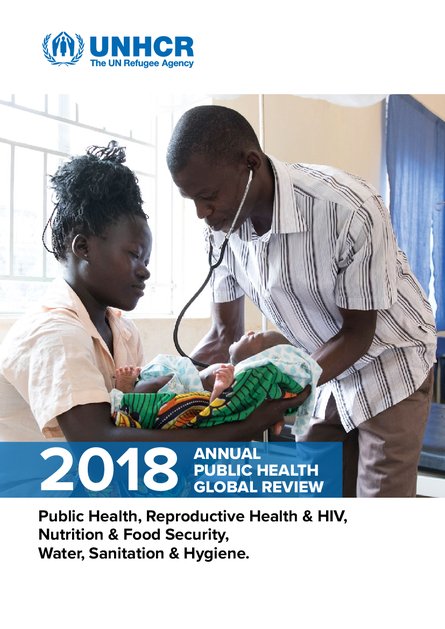
UNHCR aims to ensure that all refugees are able to fulfil their rights to access essential public health services. Its public health programmes are guided by the Global Strategy for Public Health (GSPH) 2014- 2018 whose vision is to ensure that all refugees are able to enjoy their rights to access four broad sub-sectors of public health services: a) primary and secondary health care, b) HIV prevention, protection, care and treatment, and reproductive health services, c) food security and nutrition, and d) water, sanitation and hygiene (WASH) services.
UNHCR and its partners provide significant public health services in 51 countries reaching about 10.5 million refugees. Where health service provision is integrated into national health systems, data and information is obtained through the national health information systems and surveys (health access and utilisation surveys done by UNHCR for refugees in non camp/urban settings, or national demographic and health surveys). UNHCR has an Integrated Refugee Health Information System (IRHIS), which is used to monitor refugee health status where services are provided specifically for refugees.
UNHCR used IRHIS to collect and analyse health information in 18 countries, with a population of 4,575,052 under surveillance. In 149 out of 170 (87.6%) refugee settlements under-five mortality was within acceptable standards (< 1.5 under-five deaths per 1,000 under-five population). Globally, the weighted average under-five mortality rate was maintained at 0.3 per 1000 under-five per month, an improvement from 2017 (0.4 per 1000 under-five population per month). 40% of all deaths reported were children under the age of five years. The leading causes of under-five deaths were neonatal conditions (24.7%), malaria (15.9%), lower respiratory tract infections (14.8%), acute malnutrition (7.2%) and watery diarrhea (2.1%). Globally, the weighted average crude mortality rate for the same period was 0.13 deaths per 1,000 population per month, which is within the acceptable standards (< 0.75 deaths per 1,000 population per month).
Despite continued influxes of refugees from Myanmar, South Sudan and the Democratic Republic of Congo into neighbouring countries, mortality rates were maintained below the emergency threshold in most settlements. In coordination with partners, UNHCR’s public health teams responded to various outbreaks in refugee settings including diphtheria and suspected measles in Bangladesh, cholera and viral hemorrhagic fever in Kenya and Uganda, and scurvy in Kenya.
UNHCR and its partners reported 7,575,193 consultations at the health facilities, 92.3 % of them being diagnosed with communicable diseases, 3.9% were non-communicable diseases, 1.9% were mental health conditions and 1.9% injuries cases. The top five causes of morbidity were upper respiratory tract infections (24.7%), malaria (22.1%), lower respiratory tract infections (11.4%), skin diseases (6.7%) and watery diarrhea (5.7%). Childhood diseases had a similar profile, except that acute malnutrition (4%) continued to be an additional major cause of morbidity among this age group.